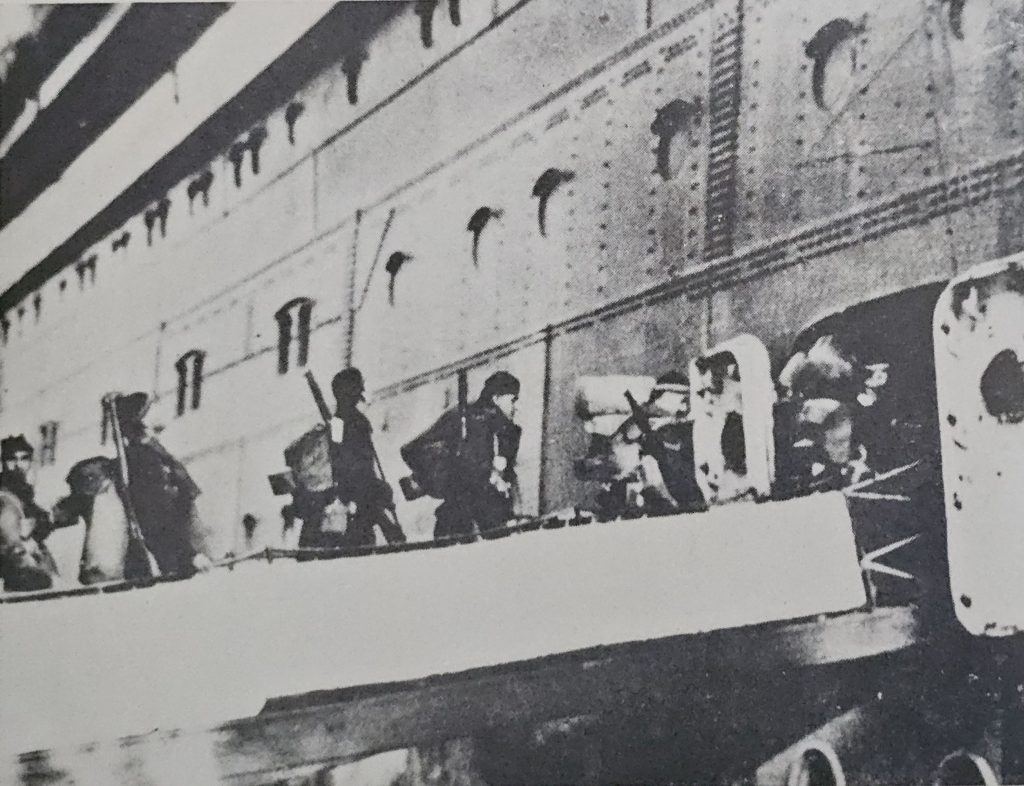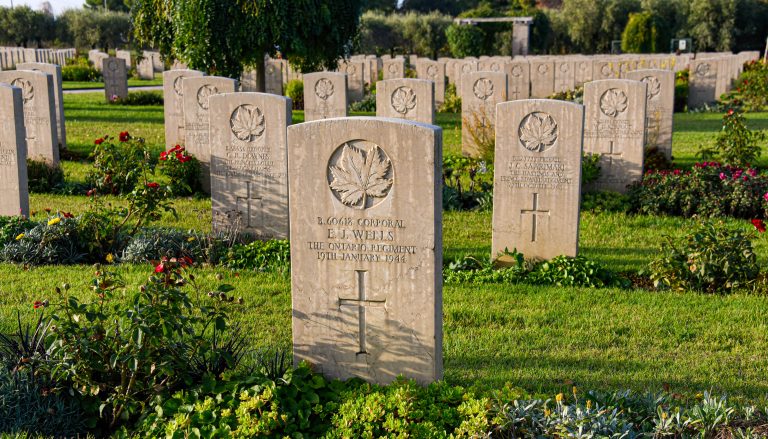Shortly after the declaration of war, the Canadian government sent a note to the British Government to determine what Canada could send right away. The British government hoped that Canada’s contribution would eventually be as great as that of the 1914 war but requested a division of infantry immediately. They could complete their training in England. The 1st Canadian Infantry Division was ready to go by early December and left in two convoys from Halifax on the 10th and the 22nd of December 1939. Convoy TC-1 left Halifax on 10 December with nearly 7500 Canadian soldiers loaded on 5 ships. The importance the British assigned to this convoy was clear, as the escorts provided from Halifax consisted of the whole of the Canadian destroyer force, the aircraft carrier HMS Furious, two Royal Navy battleships and three other British ships. When the Canadian destroyers left the convoy in mid Atlantic, the Royal Navy had 12 more destroyers there to carry on.
The five passenger liners that had been expropriated for this crossing were still fitted with all of their peacetime amenities and so the soldiers that travelled on these first two convoys enjoyed a level of luxury that was not to be enjoyed by those who followed. The crossing was smooth, even if foggy, the entire way and the soldiers had a grand time.
One of the regiments that embarked in Halifax was the Saskatoon Light Infantry (MG). This unit was one of twenty-six militia regiments that were activated in September to the Canadian Active Service Force. As a machine gun regiment, they were assigned to Divisional Headquarters as the support battalion. This meant that they would provide heavy weapons support for the other nine regiments that made up the division. They were called to active service on 1 September and started recruiting and training right away.
Among the first to sign up was Abraham Tice Post, who had just moved to Saskatoon that summer. Tice was a mechanic but had served in the Canadian Army before. He was with the Edmonton Regiment for a couple of years at starting in 1931, and he had an exciting time in the First World War. He signed up in Ontario, where he was born, and went overseas.
He had been buried by enemy shelling three times, but emerged each time unscathed. He was wounded in the Battle of Vimy Ridge in April 1917, but was back with his unit in short order.
After a course teaching the soldiers how to use the machine gun, Tice was promoted to Sergeant. His previous military experience had given him a head start on the other men. Before he boarded the train to Halifax, he was moved up to Warrant Officer Class III, or platoon sergeant major. The regiment had a big farewell from Saskatoon, in two trains. The carriages in the first train had their windows locked, but that didn’t stop the soldiers aboard from breaking them and reaching through. The second train had their windows unlocked.

29 December 1939
Warrant Officer Tice Post was aboard The Duchess of Bedford, a passenger liner built for Canadian Pacific in 1928. This ship carried half of the Saskatoon Light Infantry along with . The other half went on the Aquitania, a former Cunard passenger liner. 50 soldiers were left behind in Halifax as one of them had been diagnosed with scarlet fever on the train so all those in the carriage were quarantined until the next convoy.
On the last day, as the ships began to crowd together to come into the Firth of the River Clyde near Glasgow, the Aquitania and another former Cunard ship, the Samaria, collided at Gourock in the fog. The only casualty of the collision was a dented staff car. The Duchess of Bedford proceeded up the Clyde to dock in Glasgow proper.
The ship docked at the King George V dock in Glasgow late in the day on the 17th December, and the regiment would disembark in the morning. He was certainly excited to be back in Scotland. Back in 1916, he had arrived on July 16 on the Empress of Britain with the Canadian Expeditionary Force and left three years later the same way!
In the morning, A. Tice Post did not report for duty and was marked as Absent Without Leave, and the regiment went on to board the trains for southern England. Three days later, his body washed up ashore in Glasgow Harbour, drowned.
The veteran of some of the First World War’s biggest battles did not even get to set foot in England but did become the first casualty of the Canadian Army overseas.



